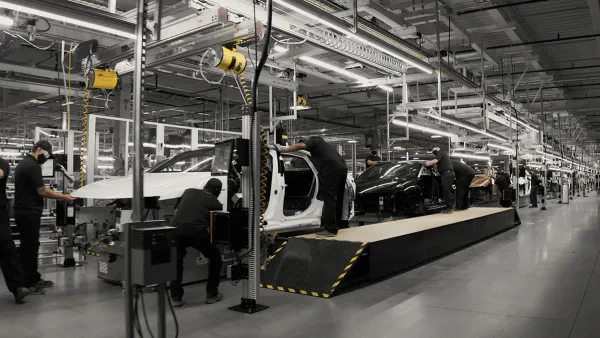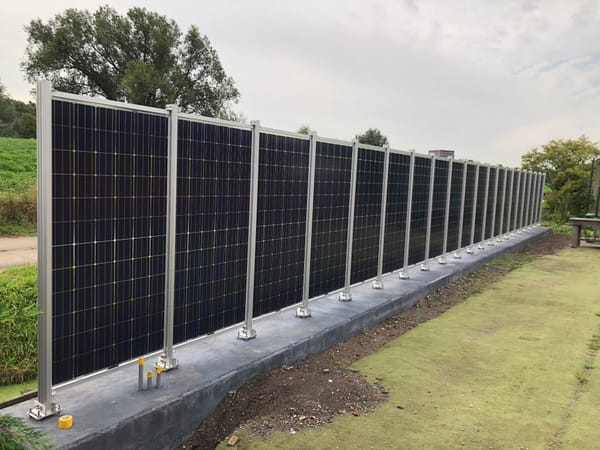Six technologies that could change everything tomorrow, and six more that could today
Good Afternoon,
Lists, lists, lists! Everyone likes lists. They’re easy to read, provide perky facts that you can say, “Hmm!” about and then repeat them to your dinner partner. So, in the interest of improving your conversationalism, I’m gonna give you a list today.
I’m not sending out a newsletter on Friday, because it’s the day before the U.S. long Labor Day weekend, and I’ve got packing to do. See you next week!
-Mike

Hey, do you like cool things? Of course you do! Do you like to think about a bright, shiny future where cool things can solve all of our problems? If you’re a human, you definitely do! New tools have been propelling us forward since our earliest days.
And when it comes to climate change, everyone loves a bit of wizardry to help us imagine a techno deus machina that can clean the air so we can continue to enjoy our beaches, temperate weather, and reasonably-long ski seasons. Here’s six technologies that are just around the corner that could change everything.
- Solid state EV batteries
Imagine an electric car that charges in 10 minutes, has a 740-mile range, is inflammable, and can be recharged more times than you can count. That’s the promise of solid state batteries Toyota says it’s developing and materials scientists think that sort of technology could be deployed by the end of the decade. Solid state batteries already exist, but in small devices like pacemakers, because currently used materials are brittle in large amounts. Once solid state EVs hit the market, internal combustion engines will seem old fashioned in comparison.
- Ever cheaper solar panels
Two measurements to think about when it comes to solar panels is the installation cost per watt and a more futuristic efficiency rating of sunlight to electricity conversion. Installation costs over the last thirty years have been plummeting, and even since 2010, average residential solar installation costs have dropped 66%. That’s largely because equipment has gotten cheaper and installation labor – as more panels go up – has gotten more efficient. Meanwhile, efficiency ratings are expected to go up even more, from a commercial average of 24% to current lab rates of 33.5%. That suggests we can expect commercially available panels in the next few years to provide as much as 50% more electricity per solar panel. Soon, going green could be a better deal than hooking up to your local utility.
- Scaled up carbon capture and sequestration
I’ve written at length about the many challenges of making carbon capture and sequestration (CCS) work. But many engineers and scientists are bullish on the technology and governments have only just begun to support its advance. For instance, the Biden Administration put $12.2 billion into buying CCS credits this year, which seems like a big number until you consider that the U.S. put $257 billion (in 2020 dollars) into the Apollo moon landing program. If CCS works at scale, then the likelihood of Earth staying below 1.5-degrees Celsius of warming increases exponentially, and we can enjoy considerably less ecological destruction.
- Hydrogen-powered flight
While it seems like a nice idea that we could revert back to taking ocean liners and resurrecting zeppelin travel, society has gotten much too used to the speed and convenience of air travel. Unfortunately, air travel is responsible for about 3.5% of global warming impact. The best solution right now seems to be converting air planes from using jet fuel – essentially kerosene – to burning hydrogen which is highly volatile under pressure and mainly emits water when it burns. Unfortunately, hydrogen has much less energy by volume than fossil fuels, so planes would have to store more fuel for shorter distances. It seems that hydrogen-fueled commuter and regional jets could work within the decade, but long haul flights are a problem yet to be cracked.
- Mass adoption of plant-based/lab-grown meat
Have you tried a Beyond Meat or Impossible burger? These two plant-based meat companies make (in my opinion) a pretty tasty burger that ends up tasting like the real thing. Lab grown meat – which is technically the same thing as a harvested animal – began to be commercially available this year. In the U.S., about 10% of emissions come from agriculture, 60% of that (so 6% overall) comes from animal-based foods. My household is already switching to vegetarian dinners once a week. I don’t think it would be hard to move to lab-grown or plant-based meat for three-times a week. We’d likely barely notice. Go try an Impossible burger and see if you notice.
- Scale up green hydrogen production
About 23% of U.S. carbon emissions come from industry, most of which are factories creating heat for chemical reactions or smelting. Burning hydrogen would allow many factories to keep their existing processes, which sometimes includes injecting feedstocks into natural gas to get desired chemical outcomes. However, green hydrogen, which is created using renewable energy to power the process is not widely available – nor is it cheap. To solve this, the U.S. Department of Energy is soliciting proposals for six to ten “hydrogen hubs” across the country, which will receive a total of $7 billion in construction funding. Then, DOE will spend another $1 billion to buy the hydrogen the hubs produce, hoping to prime the market and help drive down costs as it scales up. Possibly, by 2035, most major industries will be running on hydrogen rather than fossil fuels.
OK, that’s cool stuff, right? But it’s important to remember that we’ve already got some whizbang tech we could deploy today that could cut emissions. A short list:
- Increase train travel and mass transit – Rail travel produces about one fifth of car travel per mile.
- Increase density – Multi-unit buildings require less heating and cooling, enable more walking, and require less long-distance infrastructure.
- More efficient buildings – Especially for buildings in the Sun Belt, more insulation and less air leakage can dramatically reduce heating and cooling costs.
- More efficient appliances and HVAC – Newer appliances and moving from air conditioners to heat pumps.
- More efficient electrical grid – As I wrote last week, a strong transmission grid can allow more distributed renewable energy sources to replace existing fossil fuel.
- Switch electricity generation from fossil to renewables – Many utilities are blocking vastly more inexpensive solar and wind projects because they need to amortize their expensive fossil fuel plants. This is a solvable financial problem that’s holding back existing technology.
You made it to the bottom! Here’s a phenomenon this Northern nerd did not know about: RushTok.





